The Research:
About this time last year I became slightly obsessed (as I do) with the early 20th century bicorne and tricorn hat revival:
The tricorne revival was part of the overall 18th century revival that happened at the end of the 19th century, and flowed into an Empire revival in the late 1900s and early 1910s.
(more examples are on my pinterest page for the topic)
What’s not to love about it? It’s 18th century meets my favourite timeperiod, it’s wacky and quirky and a little bit pirate-y!
There are mentions of tricorne & bicorne hats being fashionable as early as 1897, and the tricorne revival lasted until the mid 1920s. Within the period there are definite changes – early tricorne revival hats, are generally very large, like turned-up picture hats, and are overflowing with feathers and flowers. As the 1900s progress, the hats become smaller and more streamlined. Mid-1910s examples are often quite severe, with only one upstanding feather tuft, or a sculptural bit of ribbon. Asymmetry is another major trend in mid-teens examples. Bits of the brim cut away, or one corner of the tricorne made much bigger. Late teens and early 20s examples are very small, and have floral or other trim that covers the upturned brim.
Bicorne and tricorne revival hats were often made in black plush or velvet, but also came in straw of every shade, and fabric. Velvet, plush, and dark fabrics were appropriate for winter wear, straw for summer, dark straw and heavier fabrics for spring and autumn.
From enormous picture-tricornes laden with roses, to little ’20s numbers spotted with flowers, I like all the examples of the tricorne revival!
The Make:
With tricornes and bicornes on my mind, I went looking for something for a trial of the look, and found an enormous, terrible, 1990s black straw hat at an op shop:
With some help from Felicity, I removed the trim, re-blocked the crown slightly, and sewed the hat into a tricorne shape:
Then I rummaged in my feather stash (look at that face – she desperately wants to destroy them all, and she’s also terrified at the thought of the bird that could produce them!):
I settled on a big poof of black feathers on one side as my trim. The hat got worn that way for a fantail skirt photoshoot in December:
It was fun, but not perfect, even as a simple trial of the look, it just wasn’t finished enough.
So, in a spare moment over winter, I bound the edges of the hat in a rayon satin ribbon I bought at Costume College. Then, to hold the feathers in place, I made a rosette of the same ribbon, joined to be wider.
The Result:
The hat got its first proper wearing when I photographed my 1915 ‘Waiting for Bluebell’s’ dress. I’m still trying to figure out how to make it sit properly on a mid-1910s hairstyle. It’s fine on early 1900s-1910s ones, but in late teens it ends up perched on the side of my head.
I’m definitely not done with my experiments with tricorne revival hats. I want a rose-laden number, and a plush one for winter wear, and a 1920s one….
And, even though this wasn’t meant for that, now that I have a tricorne hat, it’s high time I did something pirate-y!

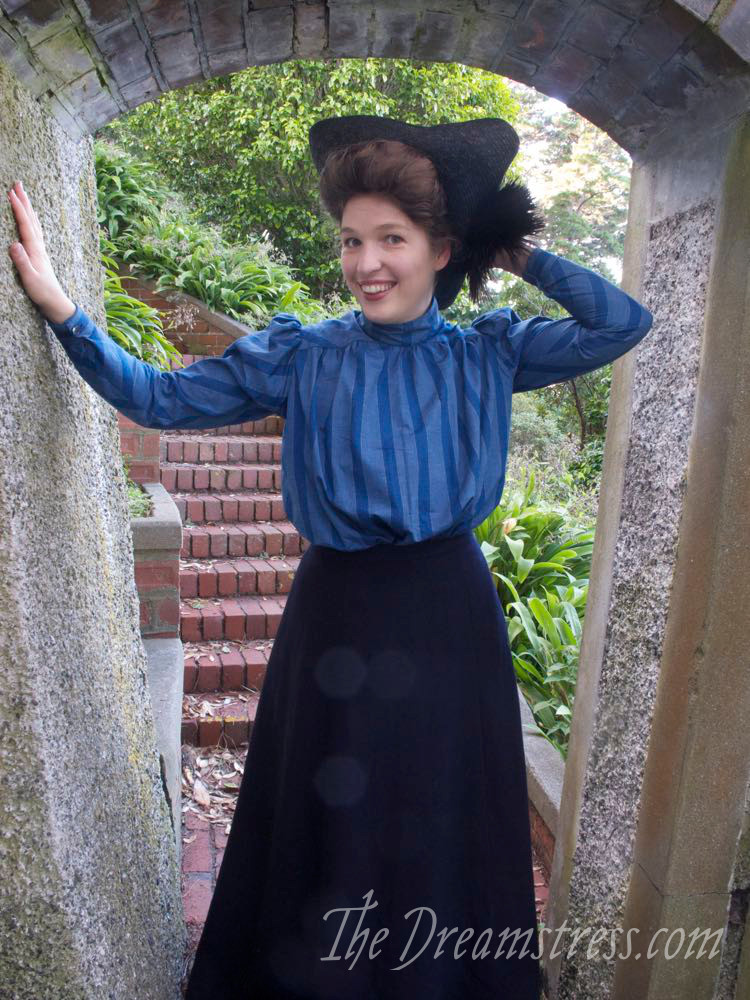



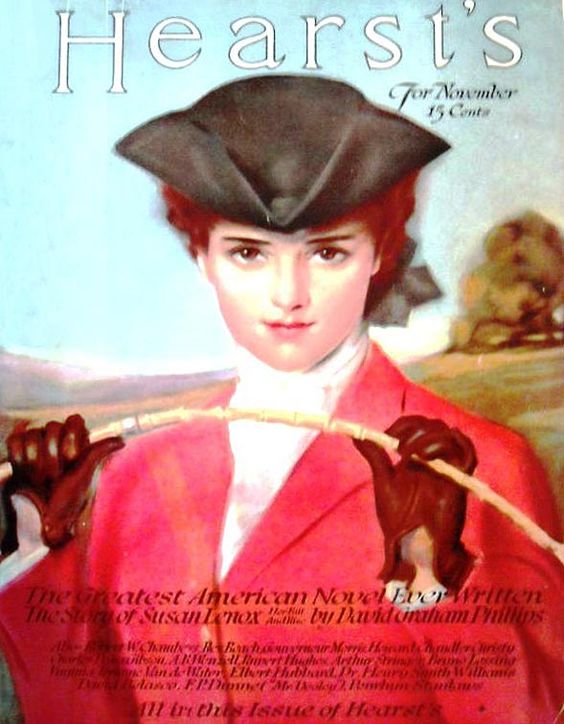

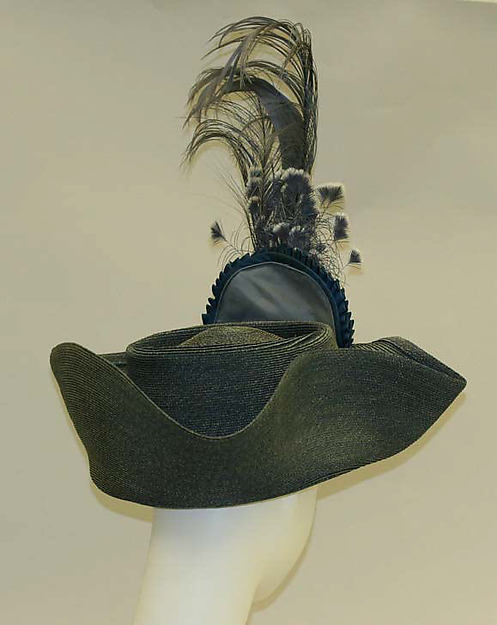
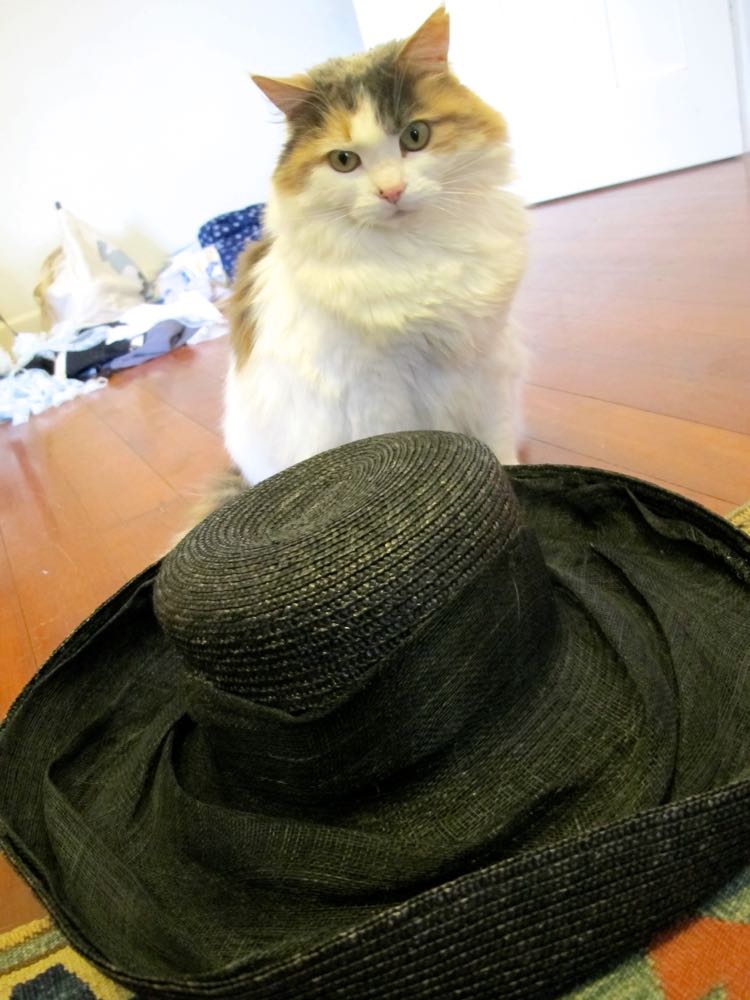
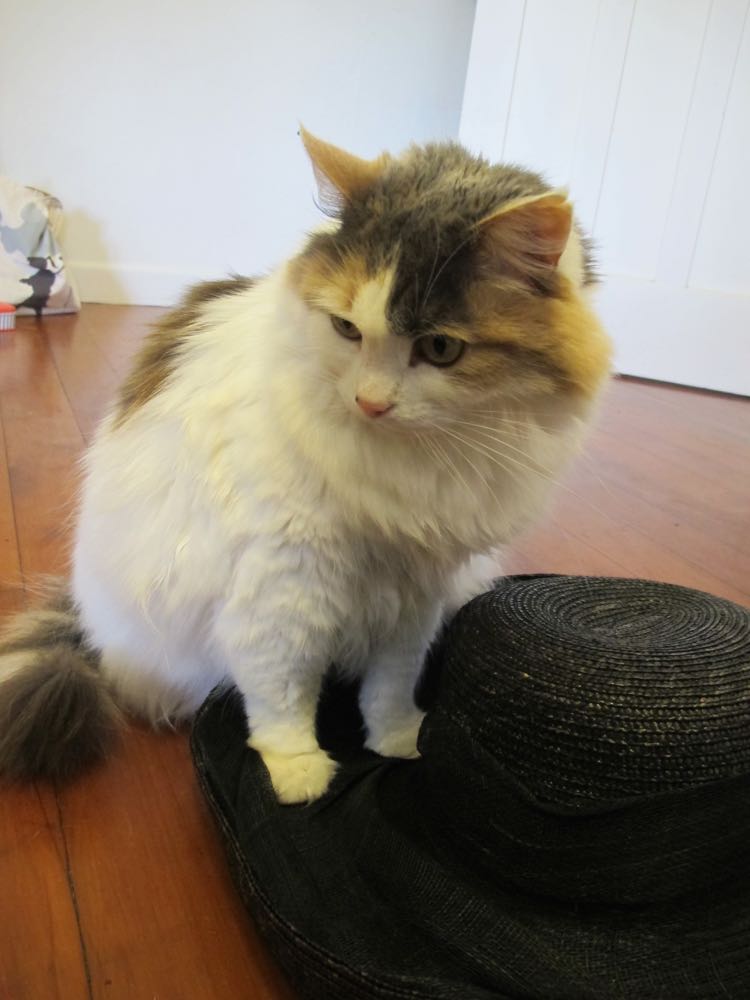
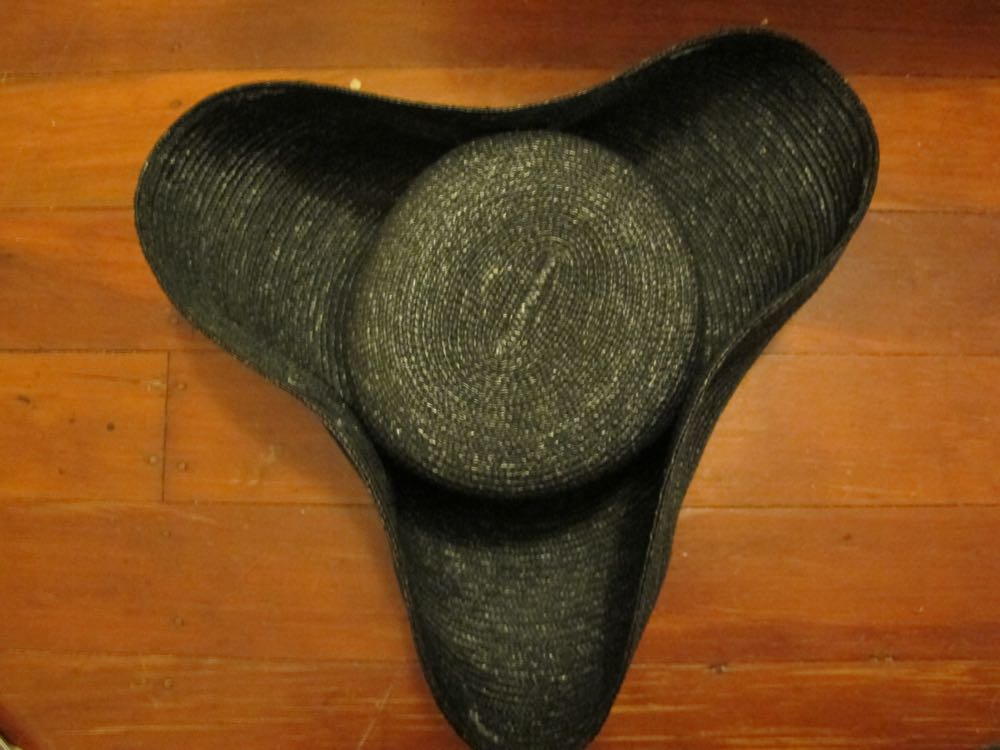
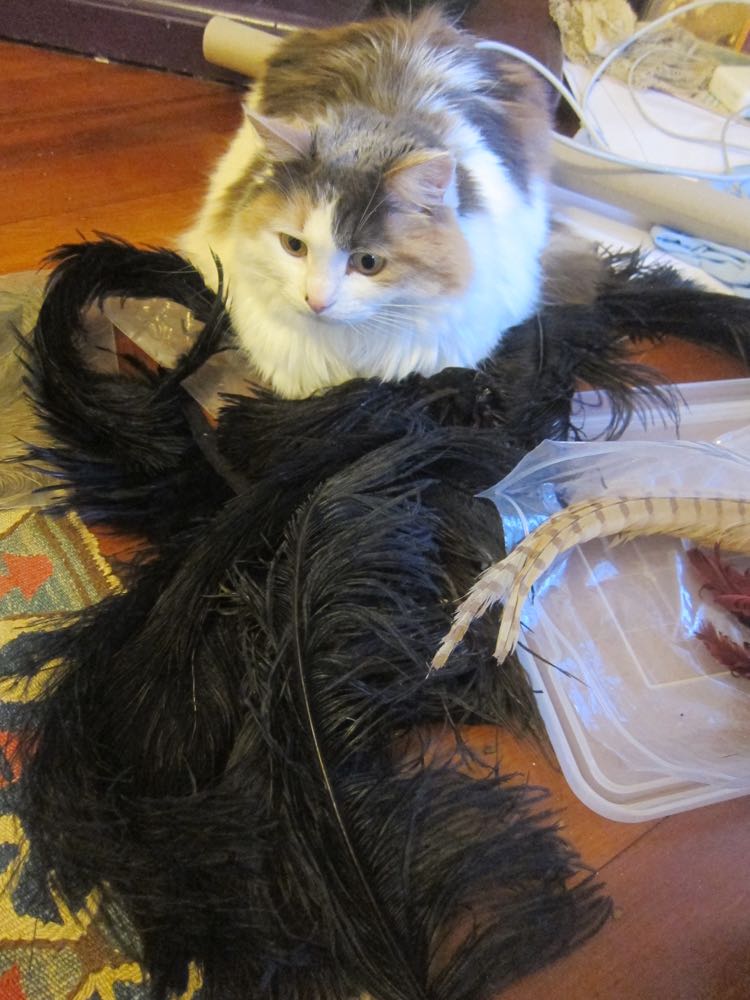

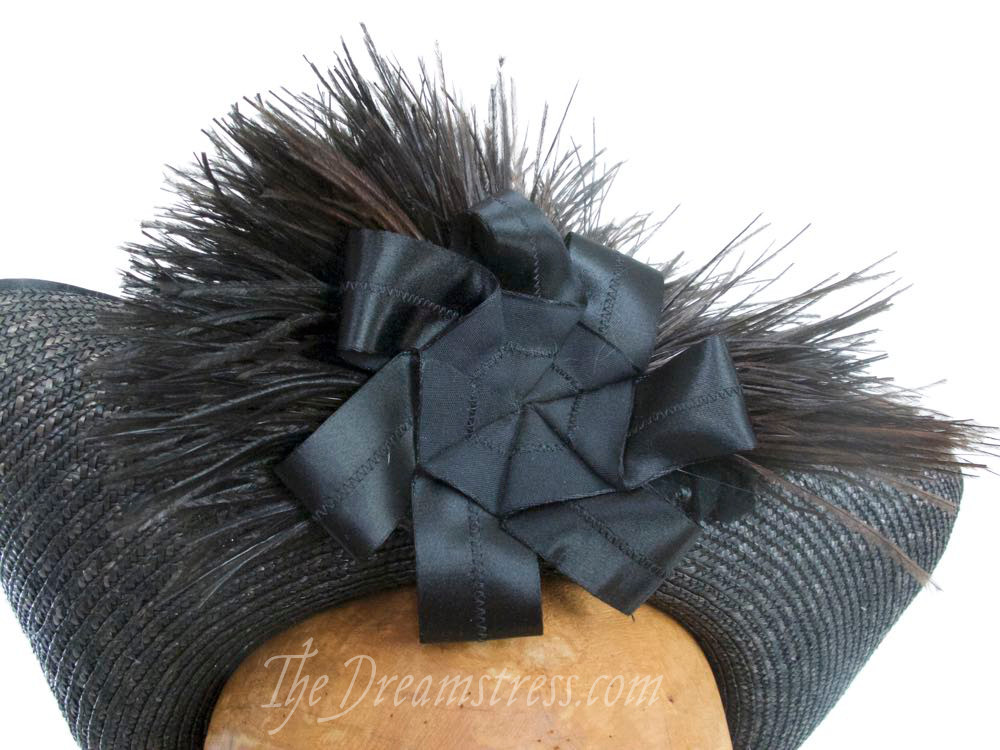
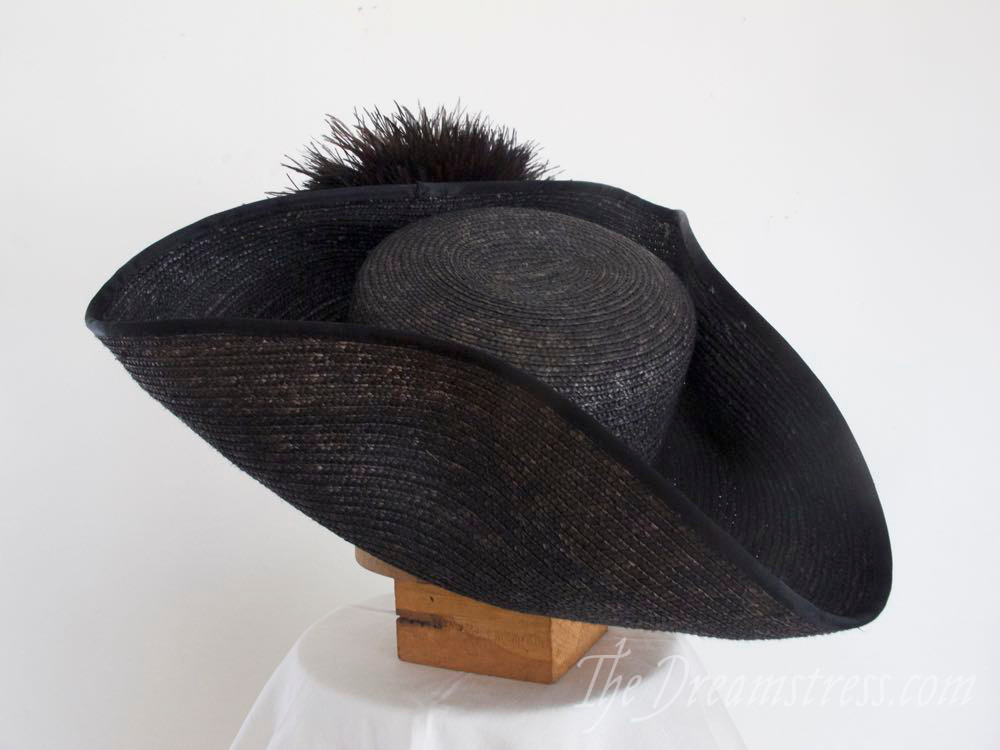
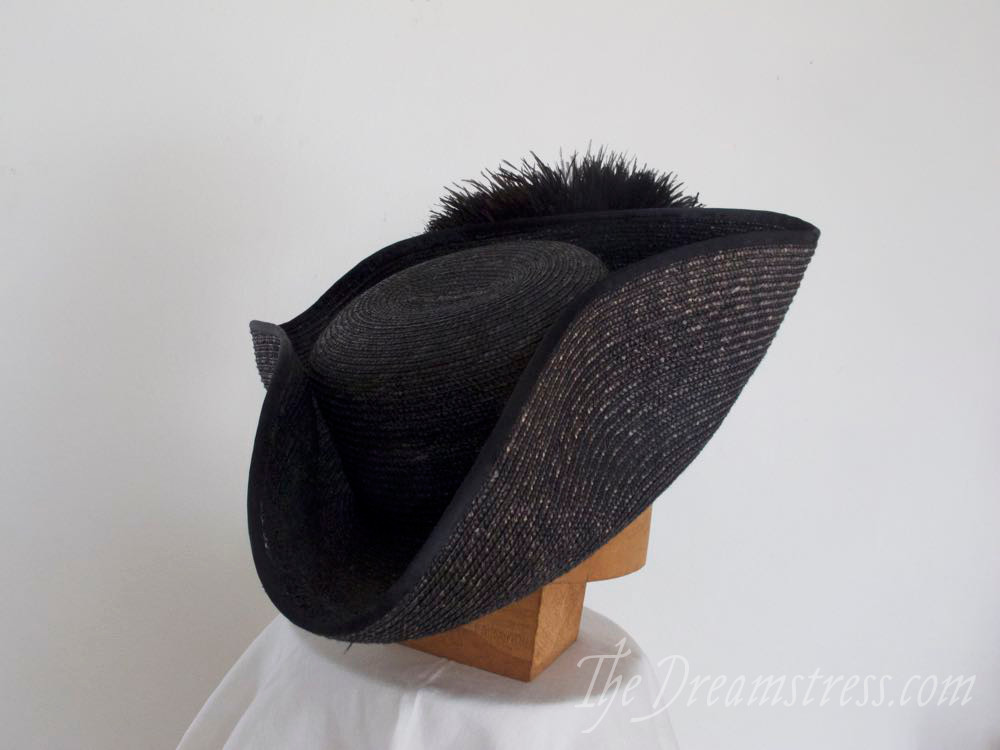
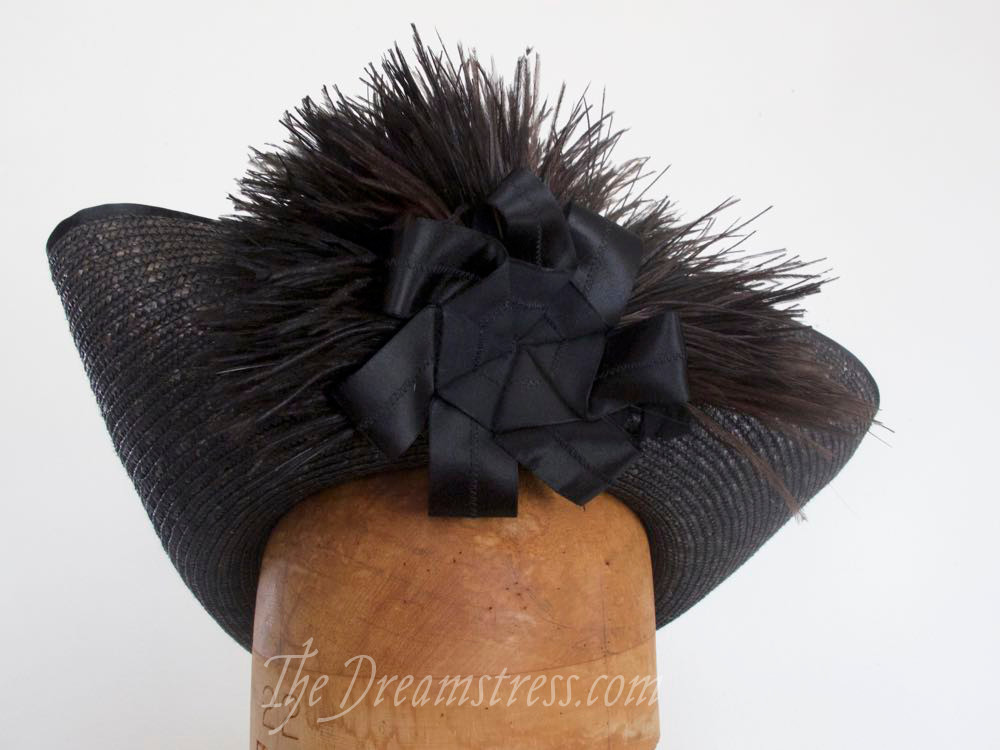
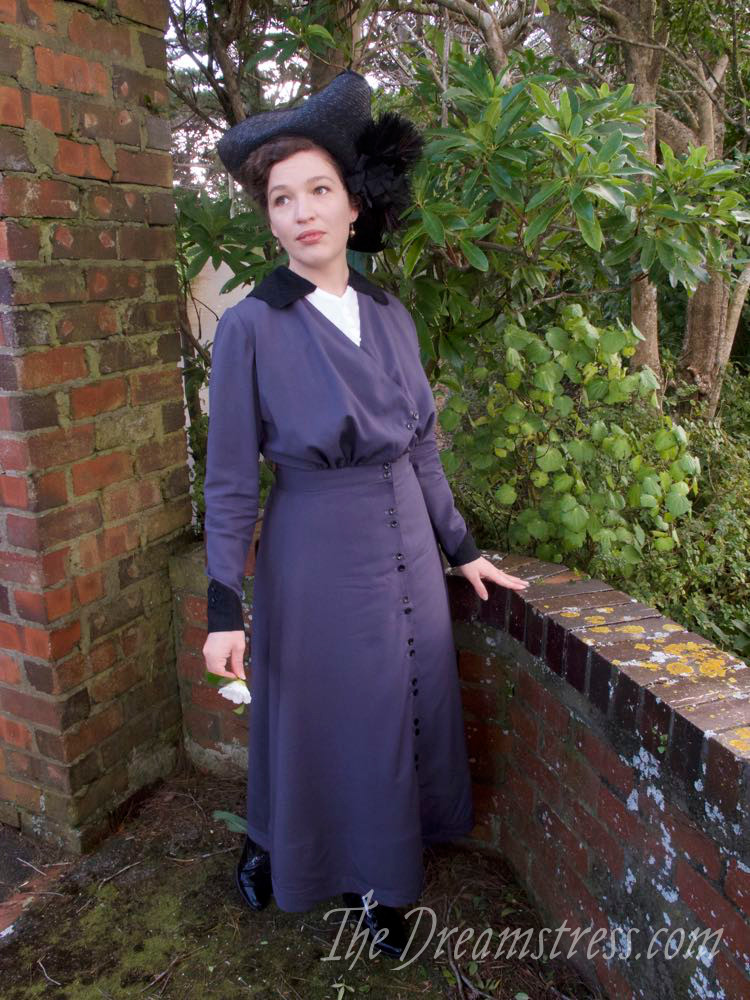
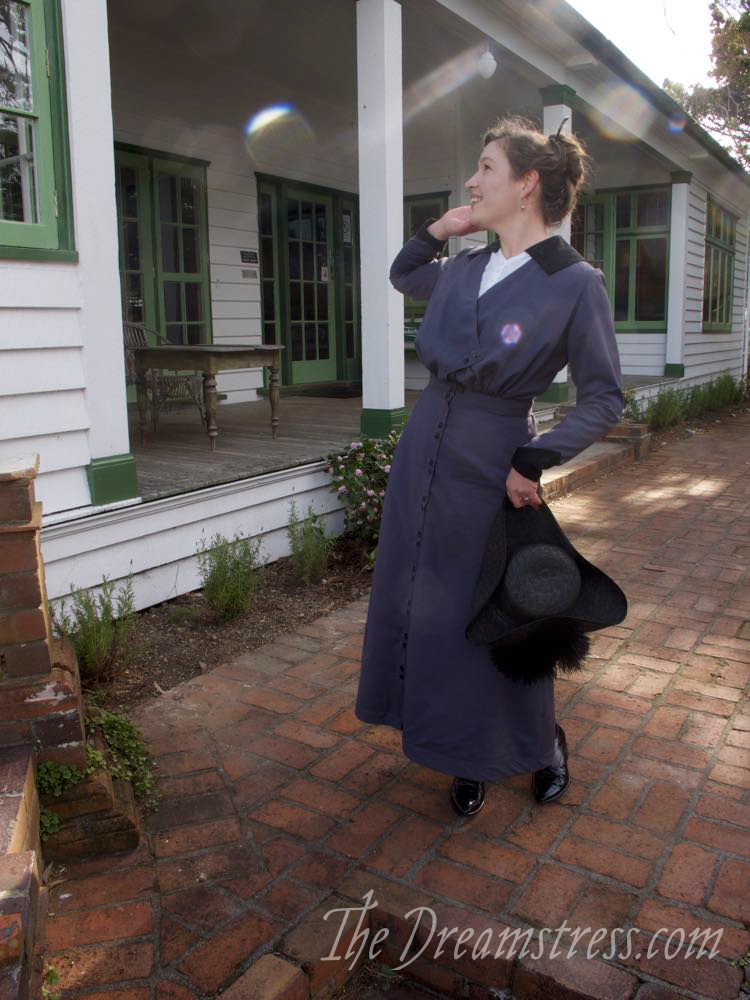
Your hat may be too chic with its feathers and ribbon to be a pirate hat now. Perhaps a skull and crossbones motif? 😉 I love your blouse. Such a gorgeous fabric and shade of blue and so very flattering on you. Good to see Miss Fissy approves too.
Ohhhh…..I especially liked the riding habit!
Obsession is goooood !
I think the rosette makes the hat. It is so pretty (as is your cat–what a beauty!)
Shades of “The Little Colonel”!
In the original book series, though not in the movie, little Lloyd’s first “Napoleon” hat, a bicorne, is purchased for her by her grandfather, the old colonel, from the legendary, long-lived but now late-lamented Stewart’s Department Store in Louisville, Kentucky, near her home in Lloydsboro Valley (in reality, Pewee Valley, later home of author Annie Fellows Johnston).
When the hat is delivered, the old colonel scoffs at it and places it askew on little Lloyd’s head – she corrects both him and the hat, declares it’s the latest thing, and he laughingly comments that it’s a regular “Napoleon hat”, and is amused that little girls are wearing Napoleon hats these days.
Of course in the movie, Shirley Temple first appears wearing a similar hat. Her hat and costume in this scene were drawn directly from a photo of Hattie Cochran, the real child who inspired “The Little Colonel”. Shirley bore a very strong resemblance to Hattie, and was ideally cast in the role.
You can find the photo of Hattie wearing the Napoleon hat and the striped collared jacket that inspired Shirley’s costume online. The costume designers for the movie really did their homework, including traveling to Pewee Valley for research, studying old photos, and meeting with many of the very real people who inspired the series’ characters.
The original covers of both “The Little Colonel’s Christmas Vacation and “The Little Colonel in Arizona” show a teenaged Lloyd wearing similar “Napoleon” hats – she must have REALLY liked that style and made it her trademark!
As a daughter of Kentucky, I grew up on “The Little Colonel” series, and am happy to report that many of the houses which are described in the books still remain and are cherished by their owners, who value their history. “The Beeches”, home of Annie Fellows Johnston, is privately owned but in pristine condition, and a historic marker just outside its grounds was dedicated last March (I was there!).
And would that be old pirates, or modern Pirates as in the political movement? 😉 (A friend of mine has just become member of Parliament for them, so I might be in the mood for a tricorne revival, too, if I wasn’t already working on a different hat and just about hoping to finish everything I want to before respective events…)
I agree that the rosette makes the hat – it gives it even more of that slight 18th century taste. The black straw was a neat find, underneath all that 1990s oddness!
Does the black and white advertisement for Cuming’s Stores , the one listing colors, really say “Nigger” as a color? It’s almost more than I can bear. Can it be removed or fixed or something? It’s all right to delete this comment, but it seemed necessary to say something.
Loved the rest of the posting.
Hi Johanne,
Yes, it does. It seems terrible to us now, but that was the ‘PC’ term at the time, and a totally acceptable colour name. It comes from Latin. I don’t remove or change period images like that, because that would be whitewashing history. Removing it would be to pretend that that historical attitudes towards race and culture didn’t exist, and that all the changes (many of which happened in the 1910s, with films like Birth of a Nation, and the revival/invention of the KKK) that turned that into a terrible word, didn’t happen. Leaving it invites research, discussion, and a continued move forward in attitudes 🙂
I agree. In one of my post was a list of clothes that started with “Cloaths belonging to the …” with the female version of the n-word ending the heading. I thought about taking the sentence out. But then it would not be part of reality. I almost went back and took it out after posting. But I didn’t because of whitewashing. So, I put it in quotes because it was their word.
And then there was the disgusting 19th century paint called Egyptian Black, which was, genuinely, made of ground up Egyptian mummies – mostly cats.
🙁
The colours listed for one hat are “Saxe, nigger, violet, navy and black”.
What colour is Saxe? And how is nigger different from black?
(two questions not to be taken out of context)
Saxe is saxe blue – a muted mid blue. N is N brown, a mid brown, not black.
Can you tell me if you used a pattern for the blue striped Edwardian blouse in your fantail shoot? Is it based on the Wearing History pattern? It is lovely!
Hi Jay,
It is loosely based on the Wearing History pattern, but I did a lot of alterations to it. 🙂
I love your hat. We’ve got a WW1 ball in January that I’m trying to plan an outfit for, so I’d love to see hairstyles from that time. My first couple of searches turned out horrible.
Every time I think I’ve made a decision for my outfit, I see another cool outfit (like your lovely blue one today) and want to totally change my direction.
Decisions are hard!
What a lovely hat & so lucky to find it in what we call in the UK a charity shop a base for it.
you’ve really made a good job of it ‘a silk purse from a sows ear’ as the saying goes. At the moment I’m making hats from old sweaters. These are from my old ones & now from charity shop rejects, those which they cannot sell which usually have hole(s), apparently the clothes recyclers will not take them & they have to be taken to the local recycling depot. It is quite hard to find wool / natural fibres which I need to be able to felt the sweaters, there is so much polyester / acrylic. Looks like NZ has more natural fibres then here probably because you have more local sheep with fleeces suitable for clothing than we do.